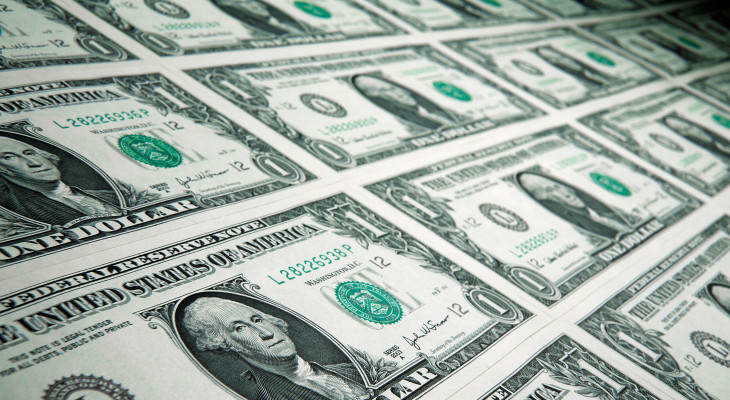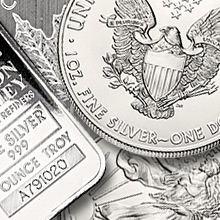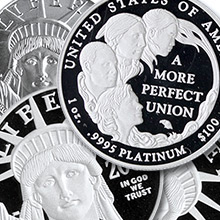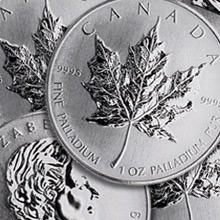
Are Banks Safe Places To Keep Money?
Money in the Bank – Is it Safe?
The phrase “money in the bank” conjures a sense of safety.
Federal Deposit Insurance Corporation
The availability of “deposit insurance” from the Federal Deposit Insurance Corporation (FDIC) provides comfort to millions of Americans who keep their money in U.S. FDIC insured banks. The FDIC covers a failed FDIC-insured bank up to at least $250,000.
The FDIC is an independent agency of the United States government and is backed by the full faith and credit of the U.S. government.
Since the start of FDIC insurance on January 1, 1934, no FDIC insured bank depositor has lost any money. You can listen to President Franklin Delano Roosevelt announce the foundation of the FDIC here. Sounds like as long as your bank is covered by the FDIC, then you have nothing to worry about.
Think again.
According to the FDIC, “the FDIC receives no Congressional appropriations – it is funded by premiums that banks and thrift institutions pay for deposit insurance coverage and from earnings on investments in U.S. Treasury securities. The FDIC insures approximately $9 trillion of deposits in U.S. banks and thrifts – deposits in virtually every bank and thrift in the country.”
FDIC limitations
While that sounds comforting, the FDIC fund covering those $9 trillion in FDIC insured deposits stands at just tens of billions of dollars . The Dodd-Frank Wall Street Reform and Consumer Protection Act of 2010, boosted the requirements of the FDIC fund covering deposits from 1.25% to 2% of estimated insured deposits. This highlights that the FDIC fund could never adequately cover deposits in the event of a widespread banking failure, cyber attack, destruction of data or general banking panic.
Bailouts and Bailins
In the event that FDIC insurance is not adequate to cover all depositors’ claims, surely you might think that ‘full faith and credit of the United States” would kick in and depositors would be made whole.
Think again.
A bank depositor is not a depositor at all, but rather a creditor of the bank, who loans the bank money at a set rate (albeit small) of interest. As such a bank depositor is really just an unsecured creditor of the bank.
First bailouts
While the banking system was bailed out in 2008, central banks around the world are determined not to have to do it again if banks get into trouble.
Next Bailins?
In early of 2013, the Bank of Cyprus, a European banking entity ran into trouble. Neither the International Monetary Fund nor the European Central Bank provided any bail out funds. Instead, the Bank of Cyprus conducted a bail-in that required depositors to “bail-in’ in the bank by foregoing a portion of their deposits. In return depositors were given equity shares in the failing bank.
The Bank of Cyprus bailin highlighted that customers who deposit money in banks are lending that money to the bank. Depositors are in effect, unsecured creditors. If the bank fails, depositors, absent a bail out or sufficient insurance to cover their deposits, get in line with other unsecured creditors to see how many cents on the dollar, if any, they can retrieve.
In August of 2014, Vice Chairman of the U.S. Federal Reserve Stanley Fisher in a speech given in Stockholm, Sweden, hinted at bailins as being a preferred method of saving troubled banks
“As part of this approach, the United States is preparing a proposal to require systemically important banks to issue bail-inable long-term debt that will enable insolvent banks to recapitalize themselves in resolution without calling on government funding–this cushion is known as a “gone concern” buffer.”
Mr. Fisher did not provide details as to what “bailinable long term debt” was, who might buy it and who was “preparing a proposal”.
The bailin approach may save troubled banks but does little to save troubled depositors, leaving them perhaps with worthless bank shares.
The Structure of Banking
The structure of modern banking relies more on confidence in the banking system than the actual soundness of the system itself.
Fractional Reserve Banking
As noted above, when one deposits money in a bank, the bank does not take the cash or an equal amount of the deposit and put cash in a vault for safekeeping until the time the “depositor” returns for all or some of it. Rather, the bank takes the depositors’ money and uses it as working capital to make loans. Indeed, banks can loan out dollars far in excess of the value of the deposits it has received. This means that the bank does not keep a one to one correspondence of depositor money on hand at the bank..
This type of “fractional reserve banking” works because on balance people who keep money in the bank leave it there and do not intend to withdraw it all at once. Bank depositors are confident, even if they know that the bank does not keep a one to one correspondence of depositor money on hand at the bank, that when they want their money it will be there for them.
Even if some depositors wanted to withdraw all their money from the bank, generally the vast majority of depositors do not and there would be enough to cover the few depositors that wanted to remove all their money. In that circumstance the banking system works and depositors do not know of, or care that a few large depositors withdrew their money from the bank.
If, however, more than a few of a bank’s larger depositors wanted to withdraw all of their money from the bank or if many smaller depositors wanted to do the same, it is quite probably that the bank would not have sufficient cash and would have to rely on FDIC insurance to make their depositors whole. When depositors catch wind of their bank being unable to satisfy withdrawal requests, they too line up to withdraw some of all their cash (called a “run on the bank“). If there are bank runs at many banks across the United States, the FDIC insurance fund would soon be exhausted and would not be sufficient and a bailin situation may arise.
Negative Interest Rates
Assuming that your bank does not fail or is the beneficiary of FDIC insurance, even a solvent bank has the potential to reduce your principal deposit amount via negative interest rates. Negative interest rates are a central bank policy tool designed to discourage savings and encourage spending in order to boost the economy. Under a negative interest rate regime, which is in place in some European countries and Japan, depositors pay the bank a rate of interest to keep their money there, instead of receiving interest for lending the bank money!
While negative interest rates do not exist in the United States, they have been discussed at the Federal Reserve and Fed Chair Janet Yellen is on record as being in favor of negative interest rates under certain circumstances.
Conclusion
The banking system relies on the confidence that the bank can return your money to you with interest. Similarly, a corporate or sovereign bond relies on the same confidence, that the the borrowing entity can return your principal with interest. The health of each borrower or financial institution varies entity to entity based on their balance and the general health of the banking system or economy. In case of systemic failure of banks and/or insurance companies, money, even in the most solid of banks, can evaporate.
Gold and silver do not rely on the health of any system or any such confidence in a system or third party promises to repay. Gold and silver are assets unto themselves which is why they are safe haven assets that become in greater demand as people lose trust or confidence in the economy or financial institutions.

|

|

|

|
This article does not necessarily reflect the explicit views of BGASC, nor should it be construed as financial advice.
